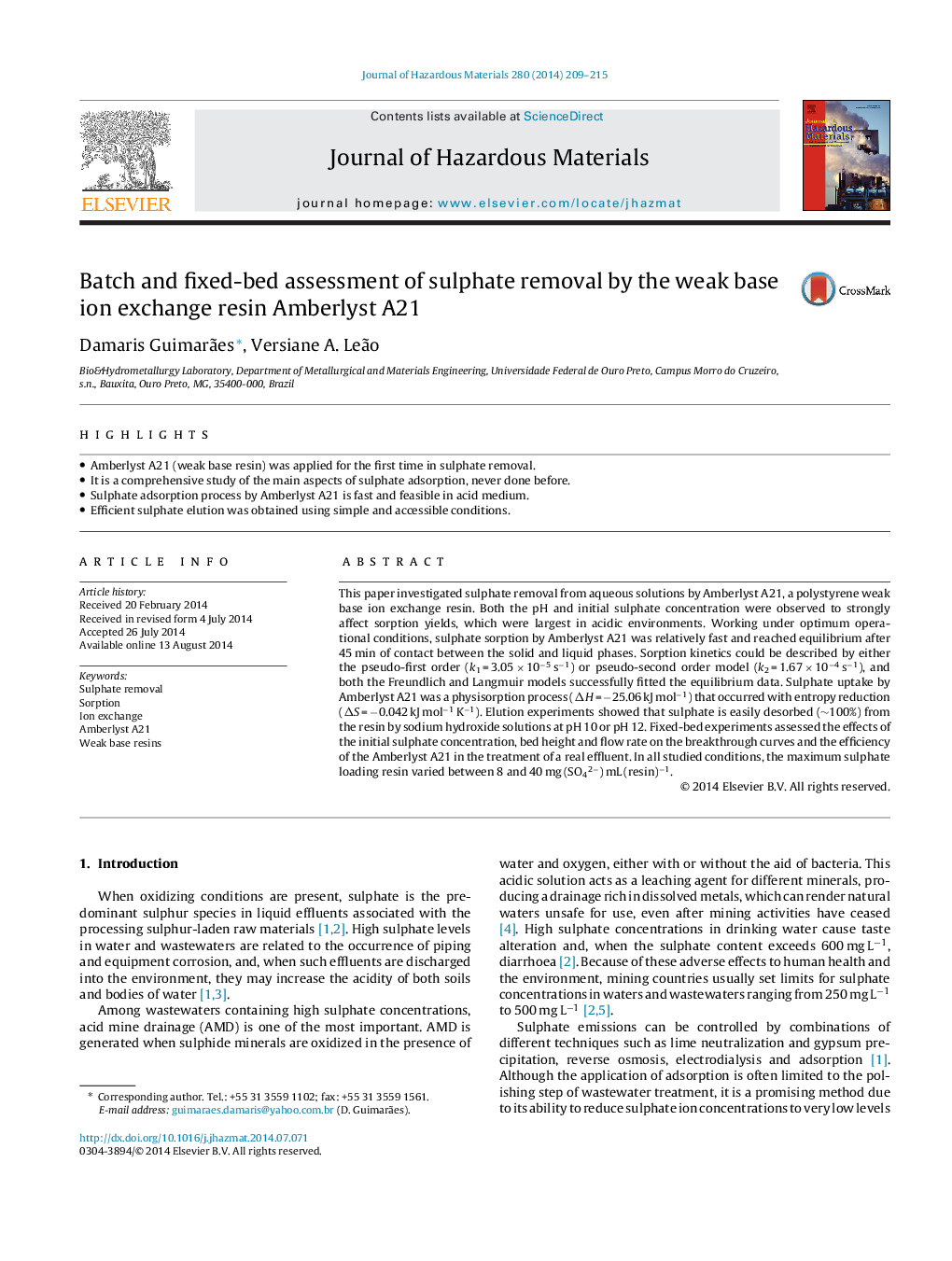| Article ID | Journal | Published Year | Pages | File Type |
|---|---|---|---|---|
| 6971361 | Journal of Hazardous Materials | 2014 | 7 Pages |
Abstract
This paper investigated sulphate removal from aqueous solutions by Amberlyst A21, a polystyrene weak base ion exchange resin. Both the pH and initial sulphate concentration were observed to strongly affect sorption yields, which were largest in acidic environments. Working under optimum operational conditions, sulphate sorption by Amberlyst A21 was relatively fast and reached equilibrium after 45 min of contact between the solid and liquid phases. Sorption kinetics could be described by either the pseudo-first order (k1 = 3.05 Ã 10â5 sâ1) or pseudo-second order model (k2 = 1.67 Ã 10â4 sâ1), and both the Freundlich and Langmuir models successfully fitted the equilibrium data. Sulphate uptake by Amberlyst A21 was a physisorption process (ÎH = â25.06 kJ molâ1) that occurred with entropy reduction (ÎS = â0.042 kJ molâ1 Kâ1). Elution experiments showed that sulphate is easily desorbed (â¼100%) from the resin by sodium hydroxide solutions at pH 10 or pH 12. Fixed-bed experiments assessed the effects of the initial sulphate concentration, bed height and flow rate on the breakthrough curves and the efficiency of the Amberlyst A21 in the treatment of a real effluent. In all studied conditions, the maximum sulphate loading resin varied between 8 and 40 mg (SO42â) mL (resin)â1.
Related Topics
Physical Sciences and Engineering
Chemical Engineering
Chemical Health and Safety
Authors
Damaris Guimarães, Versiane A. Leão,
